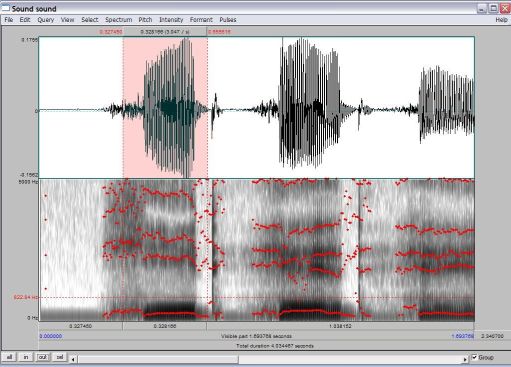

Now we “just” need to translate that into Praat’s scripting language.

I’m going to assume you’ve used DARLA or FAVE to process your files so they should look like mine does. The important part to note is that I have the word-level transcription in the second tier, and a phoneme-level transcription-in ARPABET-in the first tier. I did the word-level transcription by hand (including boundaries) and then I sent it off to DARLA for forced alignment. Sample dataįor this tutorial, I’ll work with a recording of myself reading a couple dozen words with the /u/ vowel that I created for something a few months ago. I explain what to do, but I barely skim the surface when it comes to why you need to do it that way (for example, I gloss over basic computer coding concepts like for loops and variables). Note, this post was written in small chunks over Christmas break with my in-laws in town and I haven’t had time to proofread it carefully.
#Lpc praat formant extraction how to#
Instead of giving you a fish to feed you for a night, I’ll teach you how to fish. Instead of providing you a Praat script, I’m going to show how to write your own. I’ve been meaning to create some Praat scripting tutorials so this was a good excuse to get something going. Just this week I’ve had three people ask for a Praat script that extracts formant measurements. You can find the handout here, which is slightly modified from this blog post. Note: I gave a workshop that covered the contents of this workshop. A Tutorial on Extracting Formants in Praat


 0 kommentar(er)
0 kommentar(er)
